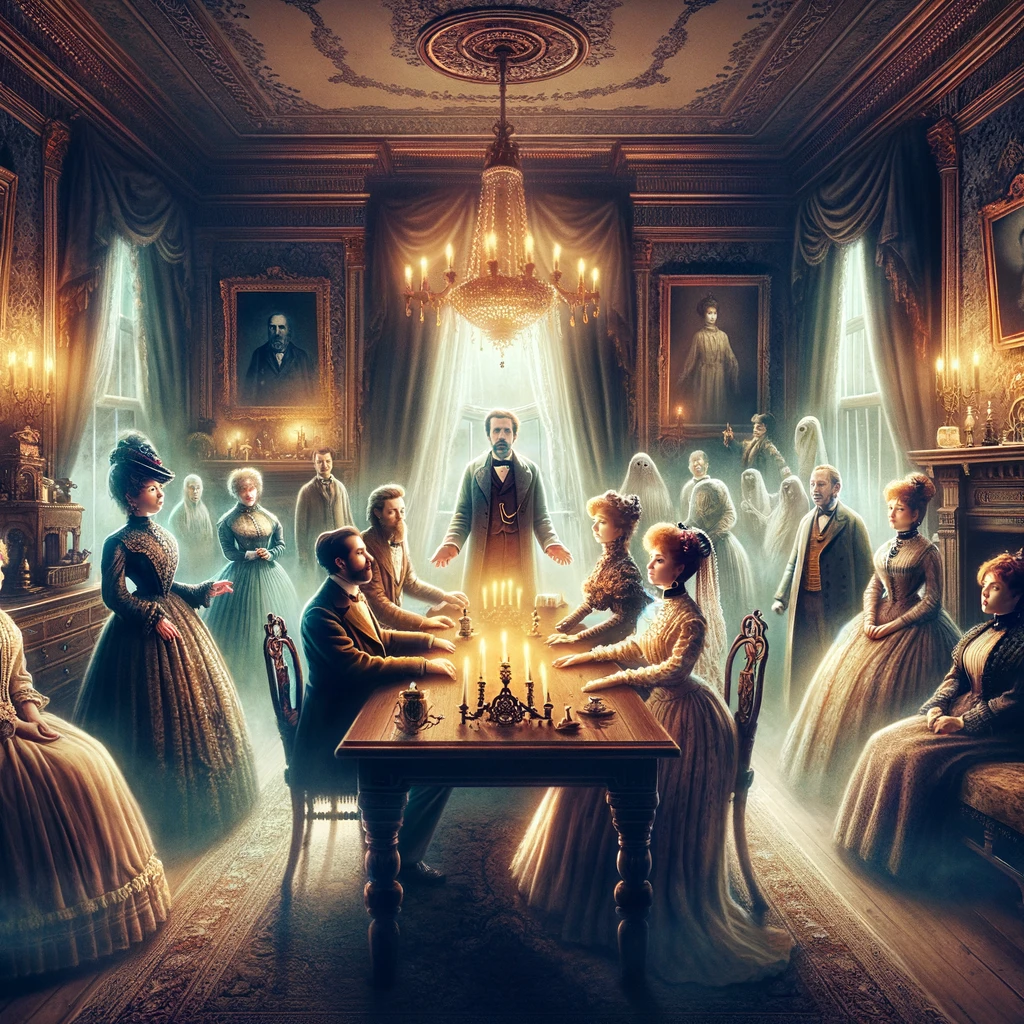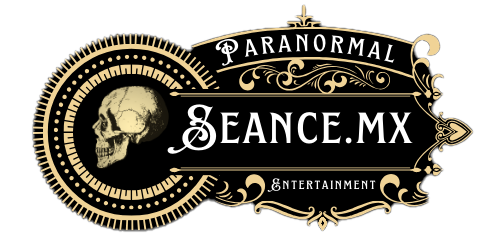
Unveiling the Veil: The Victorian Era’s Enduring Influence on the Paranormal
Introduction: A Victorian Fascination with the Paranormal
The allure of the paranormal has captivated human imagination for centuries, weaving its mysterious threads through countless cultures and historical periods. Yet, there was a particular epoch in history when the intrigue surrounding the supernatural seemed to peak: the Victorian era. This period, marked by its distinctive blend of stern morality, burgeoning scientific inquiry, and deep spiritual curiosity, became the fertile ground for a widespread fascination with the paranormal.
Victorian society, with its complex mix of progress and tradition, found itself uniquely positioned at the crossroads of scientific discovery and age-old superstitions. As the fog-laden streets of London buzzed with the latest whispers of ghostly apparitions and spectral haunts, the public’s thirst for the mysterious and the unexplained reached new heights. This blog post delves into the Victorian era’s rich tapestry of paranormal events, figures, and literary endeavors that continue to haunt our collective imagination to this day.
Historical Context: The Victorian Era and the Rise of Spiritualism
The Victorian Zeitgeist
The Victorian era, spanning the reign of Queen Victoria from 1837 to 1901, was a time of profound change and contradiction. On one hand, the period was marked by strict social codes and a moral compass tightly aligned with the Church of England’s teachings. On the other, it was a golden age of industry, where rapid technological advances seemed to shrink the world and expand the human potential simultaneously.
Spiritualism Takes Root
The mid-19th century saw the rise of spiritualism, a movement characterized by the belief that the spirits of the dead exist and have both the ability and the inclination to communicate with the living. The movement took off in the United States but quickly found fertile ground in Victorian Britain, where séances and mediums became the talk of the town.
The Impact of Darwinism
The publication of Charles Darwin’s “On the Origin of Species” in 1859 also played a crucial role in shaping the spiritual landscape of the era. Darwin’s theories challenged the traditional biblical views of creation, causing a crisis of faith for many. In this climate of doubt and scientific upheaval, spiritualism offered solace and a new way to reconcile spiritual beliefs with scientific insights.
Key Figures in Victorian Paranormal Society
The Fox Sisters and Sir Arthur Conan Doyle
The Fox sisters—Margaret, Kate, and Leah—claimed to communicate with the spirit of a deceased peddler through a series of mysterious raps, sparking a wave of spiritual fervor that swept across the Atlantic. Sir Arthur Conan Doyle, known for his Sherlock Holmes series, was also a fervent advocate of spiritualism, which he saw as entirely compatible with modern science.
Madame Helena Blavatsky: Theosophy and Beyond
Helena Blavatsky, co-founder of the Theosophical Society, offered an intricate explanation of the spiritual world that attracted a vast following. Her work proposed that human spirits evolved through reincarnation and karma, ideas that were both novel and appealing to the Victorian and Edwardian elites.
Famous Paranormal Events and Phenomena
The Séances of Daniel Dunglas Home
Daniel Dunglas Home, a medium who reportedly possessed the ability to levitate and produce mysterious raps, fascinated the public and perplexed skeptics, contributing to the era’s growing obsession with the paranormal.
The Cheltenham Ghost and Borley Rectory
The Society for Psychical Research, founded to investigate claims of paranormal phenomena, first tackled the Cheltenham Ghost, further fueling public interest in ghost stories. Borley Rectory, known as “The Most Haunted House in England,” drew paranormal investigators and was covered extensively in newspapers.
Paranormal and Victorian Literature
Ghostly Narratives and Psychological Complexity
Charles Dickens’ “A Christmas Carol” and Henry James’s “The Turn of the Screw” are prime examples of literature from the era that explored themes of the supernatural and the uncanny. These works not only thrilled readers but also reflected upon the anxieties of their time.
Contemporary Connections: Victorian Paranormal in Modern Culture
Media and Entertainment
Modern media continues to draw heavily on the Victorian gothic tradition, with shows like “Penny Dreadful” and films like “The Others” utilizing the era’s aesthetic and spiritual motifs to enhance their ghostly narratives.
Technology and Paranormal Research
Today’s ghost hunters use technology such as EMF meters and digital voice recorders, reflecting a continuation of the Victorian quest to meld science with the supernatural.
Literature and Popular Fiction
Authors like Neil Gaiman and Stephen King draw on Victorian elements, while the steampunk genre combines 19th-century industrial steam-powered machinery with speculative fiction, directly nodding to Victorian aesthetics.
The Enduring Legacy of Victorian Spiritualism
As we reflect on the Victorian era’s engagement with the paranormal, we gain insights not just into a historical period but into a cultural phenomenon that has shaped and continues to shape modern sensibilities. The Victorian fascination with the paranormal was a complex interplay of emerging scientific methods, profound spiritual questions, and a society grappling with rapid technological and social changes. This era’s legacy is visible in our ongoing fascination with the supernatural, evident in everything from modern media to ghost hunting technologies.
The Social and Cultural Impact
Victorian spiritualism also offered a voice and a platform to segments of society such as women and the middle classes, who used it as a means to express and assert themselves in a society bound by rigid hierarchies and norms. Today, the continued interest in paranormal investigation can be seen as a reflection of societal curiosity about the unknown and the unseen, much like the Victorians.
Academic Interest and Cultural Studies
In academia, the study of Victorian spiritualism provides critical insights into the era’s cultural dynamics, including its reflections on gender roles, class tensions, and the clash between traditional beliefs and new scientific discoveries. This study helps us understand how past beliefs can shape future cultural and societal norms.
Modern Cultural Expressions
The Victorian era’s blend of eerie ghost stories, high-society séances, and mystical explorations continues to influence contemporary films, books, and television series. This influence is a testament to the era’s rich narrative potential and its ability to convey deeper truths about human fears and desires.
Wrapping Up: A Legacy That Haunts Us
The Victorian era, with its mix of dread and fascination towards the paranormal, teaches us about the timeless nature of human curiosity and the ways in which we cope with the mysteries of life and death. As we continue to explore these themes today, we are walking in the footsteps of the Victorians, armed with new technologies but facing similar questions about the world and beyond.
By exploring the past, we not only understand more about our ancestors but also gain insights into our current cultural and societal practices. The Victorian era’s spiritual and paranormal legacies remind us that, in every age, humans have sought to explore the unknown, reaching out into the darkness with a candle of understanding, hoping to grasp something larger than life itself.
This concludes our detailed look into how the Victorian era’s fascination with the paranormal continues to influence and inspire our modern world. Whether through literature, cinema, or the sciences, the spirit of the 19th century endures, reminding us of our ongoing quest to balance reason with wonder, and science with the supernatural.
